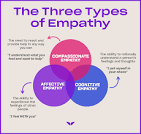The Relationship Between Autism and Cognitive Empathy
Autism Spectrum Disorder (ASD) is a complex neurodevelopmental condition that affects social interaction, communication, and behaviour. One area of particular interest in the study of autism is cognitive empathy, which refers to the ability to understand another person’s thoughts, feelings, and intentions.
Individuals with autism often experience challenges in developing cognitive empathy skills. This can manifest in difficulties in recognising and understanding others’ emotions, perspectives, and social cues. As a result, people with autism may struggle to navigate social interactions and establish meaningful relationships.
Research suggests that the differences in cognitive empathy observed in individuals with autism may be linked to underlying differences in brain structure and function. Studies using neuroimaging techniques have identified alterations in areas of the brain associated with empathy processing, such as the prefrontal cortex and the mirror neuron system.
It is important to note that while individuals with autism may have difficulties with cognitive empathy, they may excel in other forms of empathy, such as affective empathy (the ability to share and respond to others’ emotions) or compassionate empathy (the desire to help others). Recognising and valuing these unique strengths is crucial for promoting understanding and acceptance.
Efforts are underway to develop interventions and support strategies aimed at enhancing cognitive empathy skills in individuals with autism. These may include social skills training, cognitive-behavioural therapy, and tailored educational programmes designed to improve perspective-taking and emotional recognition.
By increasing awareness of the relationship between autism and cognitive empathy, we can foster greater understanding and inclusivity for individuals on the autism spectrum. Embracing neurodiversity and celebrating the diverse ways in which people experience and express empathy can help create a more empathetic and compassionate society for all.
8 Essential Tips for Enhancing Cognitive Empathy with Individuals on the Autism Spectrum
- 1. Be patient and understanding when communicating with individuals with autism.
- 2. Use clear and concise language to convey your thoughts or instructions.
- 3. Pay attention to non-verbal cues, as individuals with autism may have difficulty expressing emotions through words.
- 4. Respect personal space and boundaries to help create a comfortable environment.
- 5. Avoid sarcasm or figures of speech that may be confusing or misinterpreted.
- 6. Provide structure and routine to help individuals with autism feel more secure and organised.
- 7. Offer support and encouragement in social situations to help build confidence in social interactions.
- 8. Educate yourself about autism to better understand the unique perspectives and experiences of individuals on the spectrum.
1. Be patient and understanding when communicating with individuals with autism.
When communicating with individuals with autism, it is essential to practice patience and understanding. Recognising that they may experience challenges in cognitive empathy can help in fostering effective communication. Taking the time to listen attentively, providing clear and concise information, and being supportive can create a more inclusive and supportive environment for individuals with autism to express themselves comfortably. By showing patience and understanding, we can promote positive interactions and build meaningful connections with individuals on the autism spectrum.
2. Use clear and concise language to convey your thoughts or instructions.
When communicating with individuals who may experience challenges with cognitive empathy, such as those with autism, it is essential to use clear and concise language to convey thoughts or instructions effectively. By using straightforward and unambiguous language, you can help ensure that your message is easily understood and minimises the risk of confusion or misinterpretation. This approach can support individuals with autism in processing information more efficiently and engaging in meaningful interactions that promote mutual understanding.
3. Pay attention to non-verbal cues, as individuals with autism may have difficulty expressing emotions through words.
When interacting with individuals with autism, it is essential to pay close attention to non-verbal cues, as they may face challenges in expressing their emotions through words. Non-verbal communication, such as facial expressions, body language, and gestures, can provide valuable insights into how a person with autism is feeling or what they may be thinking. By being attuned to these non-verbal cues, we can better understand and connect with individuals on the autism spectrum, fostering more meaningful and empathetic interactions.
4. Respect personal space and boundaries to help create a comfortable environment.
Respecting personal space and boundaries is a crucial tip for supporting individuals with autism in developing cognitive empathy. By creating a comfortable environment where individuals feel safe and respected, we can help reduce anxiety and promote positive social interactions. Encouraging awareness of personal space and teaching appropriate boundaries can enhance understanding of social cues and improve interpersonal relationships for individuals with autism. This practice fosters a sense of security and mutual respect, laying the foundation for meaningful connections based on empathy and understanding.
5. Avoid sarcasm or figures of speech that may be confusing or misinterpreted.
When communicating with individuals who have autism and may experience challenges with cognitive empathy, it is advisable to avoid using sarcasm or figures of speech that could be confusing or misinterpreted. Clear and direct language helps prevent misunderstandings and promotes effective communication, fostering a more inclusive and supportive interaction environment for individuals on the autism spectrum.
6. Provide structure and routine to help individuals with autism feel more secure and organised.
Providing structure and routine is a valuable tip for supporting individuals with autism in developing cognitive empathy. By establishing clear expectations and predictable schedules, individuals with autism can feel more secure and organised in their daily lives. Consistent routines can help reduce anxiety and uncertainty, allowing individuals to focus on learning and practising cognitive empathy skills in a stable environment. This structured approach creates a supportive foundation for fostering social interactions and understanding others’ perspectives, ultimately enhancing the overall well-being and social development of individuals with autism.
7. Offer support and encouragement in social situations to help build confidence in social interactions.
Offering support and encouragement in social situations is a valuable tip for helping individuals with autism develop their cognitive empathy skills. By providing a supportive environment and positive reinforcement, individuals can feel more confident and empowered to engage in social interactions. Building confidence in social settings can enhance their ability to understand others’ perspectives, emotions, and intentions, ultimately improving their overall social communication skills. This approach not only fosters personal growth but also promotes inclusivity and understanding within the community.
8. Educate yourself about autism to better understand the unique perspectives and experiences of individuals on the spectrum.
To enhance your understanding of the distinctive viewpoints and encounters of individuals on the autism spectrum, it is essential to educate yourself about autism. By delving into resources that shed light on the complexities of autism, you can gain valuable insights into the challenges and strengths that characterise individuals with ASD. This knowledge not only fosters empathy and compassion but also promotes a more inclusive and supportive environment for individuals on the autism spectrum to thrive.


